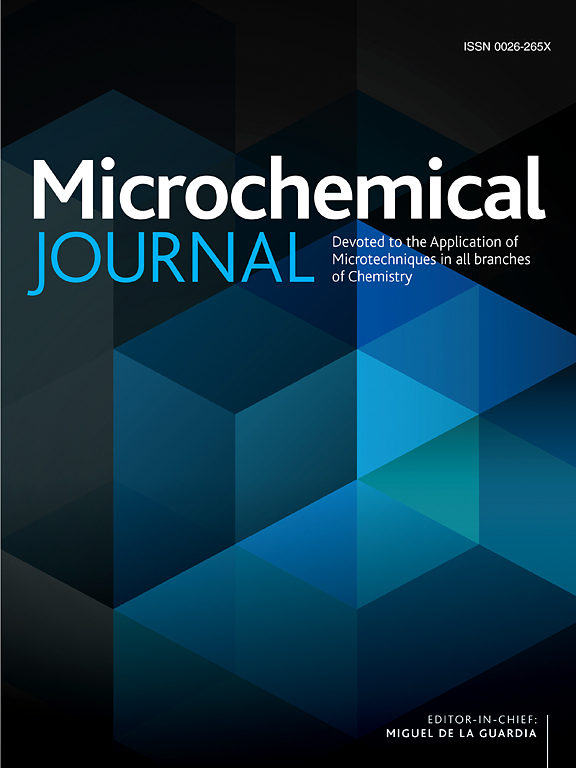生物分析应用中采样和基于吸附剂的样品制备程序的最新趋势
IF 4.9
2区 化学
Q1 CHEMISTRY, ANALYTICAL
引用次数: 0
摘要
上个世纪,在分析领域,研究人员对分析初步阶段的兴趣与日俱增,为样品制备领域的重要创新提供了空间,但最重要的是重新激发了人们对这一领域的兴趣。众所周知,这些阶段是整个分析过程中最关键的阶段,不仅耗时长,而且会造成最终的测量误差。从这个角度来看,近年来科学界的兴趣与日俱增,不仅致力于开发创新技术,在保持高分析性能的同时减少对样品的操作,而且还致力于减少此类程序对环境的影响。本综述的主要目的是提供一份文献概览,重点介绍在仪器分析的三个主要 "部分"(基于传感器的分析、电化学分析和基于色谱的分析)中应用(或最近开发)的最先进的基于吸附剂的采样和样品制备技术。作者特别希望概述不同程序的主要优缺点,尤其是评估不同方法在生物基质分析(生物液体、组织等)领域的应用情况。最后一段还考虑了(使用最新工具)对环境影响评估的评估和估计,以及如何将其应用于该领域(AGREE、AGREEprep 和 MoGAPI)。通过这些应用,还评估了如何通过检查 "关键 "点和补救/优化程序来实现持续改进。本综述最后以未来展望部分结束,作者们(基于他们在各自应用领域的丰富经验)试图假设一个可能的未来和一种可能的方法,以确保分析过程的这一部分能够进一步发展,并支持生物分析应用领域每天出现的新挑战。本文章由计算机程序翻译,如有差异,请以英文原文为准。

Recent trends in sampling and sorbent-based sample preparation procedures for bioanalytical applications
In the last century, in the analytical field, the interest of researchers in the preliminary phases of the analysis has grown more and more, giving space to important innovations in the field of sample preparation, but above all leading to a renewed interest in this field. It is known that these phases are the most critical of the entire analytical process not only in terms of time, but also in terms of final measurement error. In this perspective, in recent years a growing interest of the Scientific Community and important efforts have been directed towards not only the development of innovative techniques that allow a reduction in sample manipulation while maintaining high analytical performance, but at the same time also towards a reduction in the environmental impact that such procedures can have. In this direction, there is also the possibility of intervening to reduce the quantity of sample processed and, consequently, obtain a reduction in the volumes of solvents and non-green reagents.
The main objective of this review is to provide an overview of the literature focused on the most modern sorbent-based sampling and sample preparation techniques that are applied (or have been recently developed) in the three main “sections” of instrumental analysis (sensor-based analysis, electrochemical analysis and chromatography-based analysis). In particular, the Authors wanted to outline the main advantages and disadvantages of the different procedures and above all evaluate how the different methods are applied in the field of biological matrix analysis (biological fluids, tissues, etc.). A final paragraph also considers an evaluation and estimate (using the most recent tools) for the environmental impact assessment and how they can be applied in this field (AGREE, AGREEprep, and MoGAPI). Through these applications it is also evaluated how continuous improvement is possible by checking the “critical” points and remedying/optimizing the procedures in this sense.
The present review finally concludes with a section on future perspectives in which the Authors (based on their vast experience in their respective fields of application) have tried to hypothesize a possible future and a possible way to be considered to ensure that this part of the analytical process can further progress and support the new challenges that daily arise in the field of bioanalytical applications.
求助全文
通过发布文献求助,成功后即可免费获取论文全文。
去求助
来源期刊

Microchemical Journal
化学-分析化学
CiteScore
8.70
自引率
8.30%
发文量
1131
审稿时长
1.9 months
期刊介绍:
The Microchemical Journal is a peer reviewed journal devoted to all aspects and phases of analytical chemistry and chemical analysis. The Microchemical Journal publishes articles which are at the forefront of modern analytical chemistry and cover innovations in the techniques to the finest possible limits. This includes fundamental aspects, instrumentation, new developments, innovative and novel methods and applications including environmental and clinical field.
Traditional classical analytical methods such as spectrophotometry and titrimetry as well as established instrumentation methods such as flame and graphite furnace atomic absorption spectrometry, gas chromatography, and modified glassy or carbon electrode electrochemical methods will be considered, provided they show significant improvements and novelty compared to the established methods.
 求助内容:
求助内容: 应助结果提醒方式:
应助结果提醒方式:


